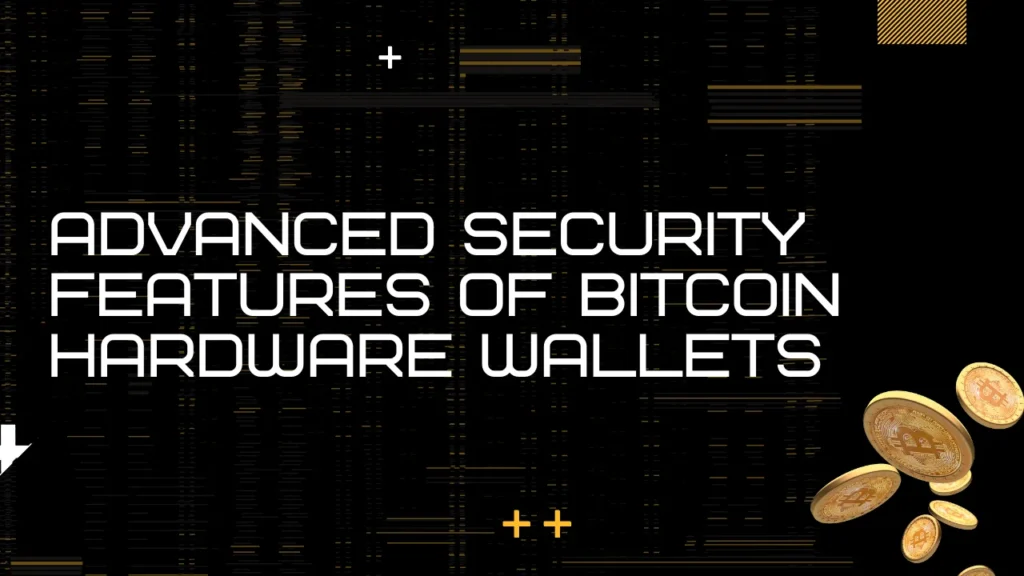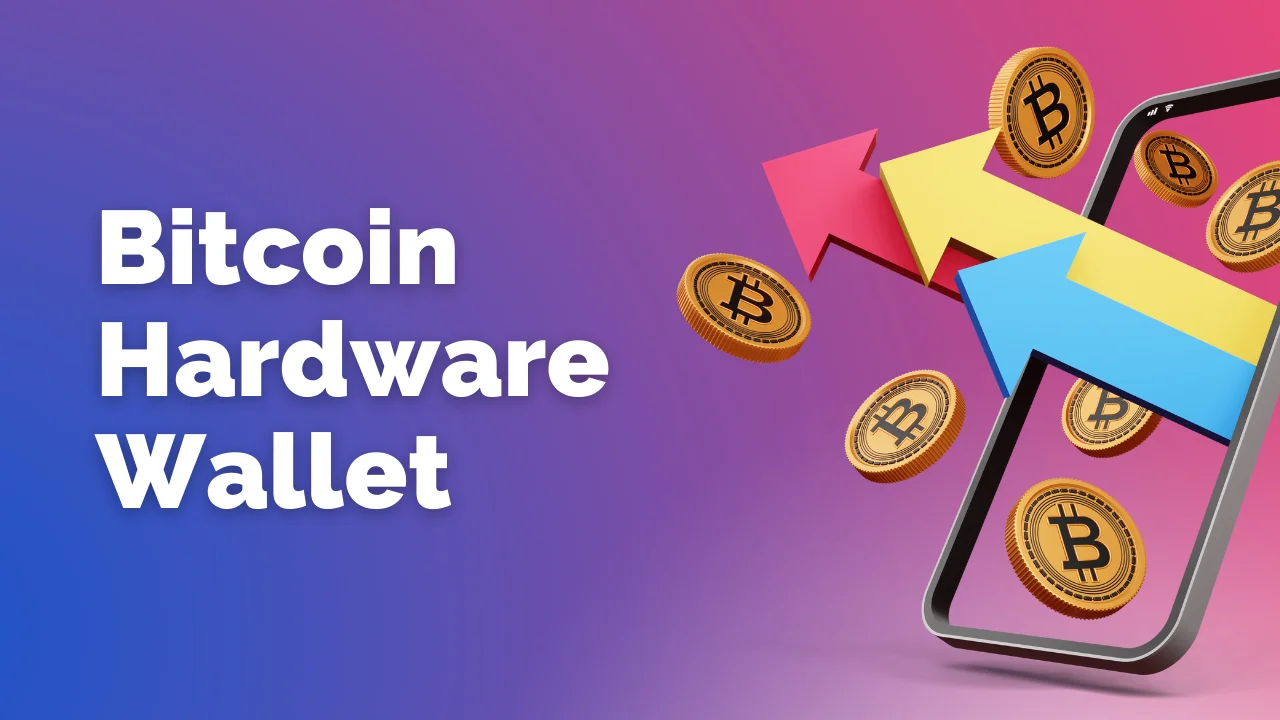Cryptocurrency enthusiasts who want to keep their digital assets safe should invest in a Bitcoin hardware wallet. Hardware wallets are safer than software wallets because they store private keys offline on a physical device, rather than on the internet, which makes them less vulnerable to hacking. They are among the most secure choices for handling and protecting cryptocurrency investments because of this feature.
Understanding Bitcoin Hardware Wallets
What Is a Bitcoin Hardware Wallet?
One tangible way to store and access one’s private keys and public addresses for use in Bitcoin transactions is with a hardware wallet. Protecting one’s private keys from online dangers like hackers and malware is the primary goal of a hardware wallet. If you’re serious about safely managing your cryptocurrency assets, you need a hardware wallet to store your private keys. This will guarantee that no one else can access your funds.
How Do Bitcoin Hardware Wallets Enhance Security?
To safeguard the user’s digital assets, hardware wallets are engineered with strong security features. Biometric sensors, two-factor authentication, and PIN codes are common examples of such security measures. Using secure element chips, which protect the device’s contents from physical attacks, makes them resistant to unauthorized physical handling.
Key Features of Popular Hardware Wallets
Devices with intuitive user interfaces and support for numerous cryptocurrencies are available, such as the Trezor Model T and the Ledger Nano X. Take the Ledger Nano X as an example. It’s capable of managing more than 5,500 cryptocurrencies and comes with Bluetooth capabilities for mobile use. However, you won’t find this feature in its desktop application. However, Trezor’s Model T isn’t Bluetooth enabled, but it does support about 1,470 different cryptocurrencies and has a touchscreen to improve user interaction.
Why Choose a Bitcoin Hardware Wallet?
Hardware wallets provide the optimal combination of security and convenience for individuals seeking to safeguard their cryptocurrency holdings. Keeping the user’s private keys separate from any devices connected to the internet and any possible security flaws in the system makes them an ideal choice for both short-term and long-term storage needs.
Innovative Features in New Models
The Ledger Stax, with its E-Ink touchscreens and wireless charging capabilities, is just one example of how hardware wallet technology is constantly evolving to accommodate new technologies and innovative features. To meet the demands of today’s cryptocurrency users, these innovations attempt to integrate security with usability.
Core Advantages of Bitcoin Hardware Wallets

Secure Cryptocurrency Storage
Hardware wallets offer an extra layer of protection, which is the main benefit of using one. It protects cryptocurrency from online dangers like viruses, malware, and hacking attempts because it stores them offline.
Multi-Currency Support
Not only does Bitcoin work with many hardware wallets, but so do a number of other cryptocurrencies. This feature allows users to manage multiple currencies through a single device, which is incredibly beneficial for users with a diverse portfolio of digital assets.
Enhanced Security with Biometric Features
To further guarantee that no one other than the wallet’s owner can access its contents, some newer hardware wallets use biometric security features like fingerprint recognition.
Two-Factor Authentication for Additional Safety
Two-factor authentication (2FA) entails an additional layer of security beyond the hardware device alone, usually in the form of a code or message sent to a mobile device. Unauthorized access is greatly mitigated by this feature.
Long-Term Cryptocurrency Holding
Hardware wallets are ideal for long-term investors or “HODLers” looking to store their cryptocurrencies safely over extended periods. Hardware wallets reduce the possibility of loss or theft caused by cyber assaults by maintaining the assets offline.
Potential Risks and Considerations
Physical Vulnerability of Devices
Hardware wallets are still physical objects that can be stolen, broken, or lost, even though they have strong online security. Like any other valuable possession, users should think about how secure their hardware wallet is physically.
Managing Recovery Seeds
When using a hardware wallet, it is essential to manage the recovery seed. This is a one-of-a-kind phrase that can be used to retrieve the cryptocurrency stored on the device in the event that it is misplaced or damaged. To avoid loss or theft, users should keep their recovery seeds in a safe place.
Cryptocurrency Hardware Wallet Risks
Even though they are very safe, hardware wallets are not risk-free. There is a chance that devices might be tampered with either during manufacturing or before they are sold to the customer. Furthermore, careless handling can compromise the physical element.
Advanced Security Features of Bitcoin Hardware Wallets

Secure Element Chip Integration
In order to keep private keys safe, bitcoin hardware wallets use secure element chips, which are specialized circuits. Even if the device gets into the wrong hands, the data will be protected because these chips can resist physical tampering and sophisticated cyber-attacks.
Private Key Protection Device
Protecting the user’s private keys from any and all internet-connected devices and security flaws is the fundamental goal of a hardware wallet. Using one of these wallets is a surefire way to keep your keys safe from prying eyes and malicious software.
Multi-layer Security Wallet
Many bitcoin hardware wallets use many layers of security protocols to maximize security. Multiple layers of security are often used, including biometric verification, two-factor authentication, and PIN codes. Having strong and dependable barriers to unauthorized access is ensured by multi-layered security.
Comparing Popular Bitcoin Hardware Wallets
Ledger Nano X Features
Famous for its mobile-friendly design and extensive cryptocurrency support, the Ledger Nano X is a device worth considering. Using its built-in Bluetooth, you can easily pair it with your smartphone for secure, hassle-free transactions while on the go.
Trezor Model T Review
A touchscreen interface greatly simplifies the user experience on the Trezor Model T. Although some users might be disappointed that it lacks Bluetooth connectivity, it is well-respected for its robust security framework and supports a large variety of cryptocurrencies.
Ledger vs. Trezor: Which Offers Better Security?
Both the Trezor Model T and the Ledger Nano X offer top-notch security, but which one is better usually depends on personal preference when it comes to features like touchscreen interfaces and Bluetooth connectivity. With features like secure element chips and the ability to support multiple layers of security, both models are equipped with advanced security measures.
Technological Advancements in Bitcoin Hardware Wallets
Wireless Charging Crypto Wallet
One of the latest innovations in hardware wallet technology is the ability to charge devices wirelessly, eliminating the need to plug them into a power outlet. This feature improves the device’s usability without sacrificing its security.
E-Ink Display Crypto Wallet
Newer hardware wallets may have E-Ink screens, which are more readable and use less power. Not only are E-Ink displays more comfortable on the eyes, but they also make wallets more energy efficient by extending the battery life.
Bluetooth-enabled Crypto Wallet
Managing transactions on mobile applications can be made easier with hardware wallets that have Bluetooth technology, such as the Ledger Nano X. This technology allows for wireless communication with other devices. On the other hand, you must ensure that these connections are protected to avoid any possible weaknesses.
FAQs
Are Bitcoin Hardware Wallets Worth the Investment?
Yes, for anyone serious about cryptocurrency security, hardware wallets provide indispensable benefits that software wallets cannot match, particularly in terms of physical security and offline storage.
How to Set Up a Bitcoin Hardware Wallet?
Setting up a hardware wallet involves initializing the device, creating a recovery seed, and transferring cryptocurrencies to the newly secure wallet. Each device comes with its own set of instructions for these processes.
What Features Do Ledger Nano X Offer?
The Ledger Nano X features support for over 5,500 cryptocurrencies, Bluetooth connectivity for mobile use, and a built-in battery for on-the-go use.
How to Recover Cryptocurrencies If a Hardware Wallet Is Lost?
If a hardware wallet is lost, users can recover their funds using the recovery seed. It is crucial to store this seed in a secure location to ensure the recovery process can be executed.
What Is Two-Factor Authentication in Bitcoin Hardware Wallets?
Two-factor authentication in hardware wallets adds an additional layer of security by requiring a second form of verification, which makes unauthorized access significantly more difficult.
Also Check: Banking on Bitcoin: A Detailed Note
Conclusion
Hardware wallets for Bitcoin are the most advanced method of securing digital assets, giving users peace of mind. Innovative technologies like E-Ink displays and wireless charging are integrated with advanced security features like secure element chips and multi-layer security protocols in these devices. Users can rest easy knowing their investments are protected against digital and physical threats when they choose the Trezor Model T with its touchscreen interface or the Ledger Nano X with its Bluetooth connectivity. These vital tools are constantly improving our capacity to safeguard and engage with our digital currencies as technology advances, both in terms of functionality and security.

Timothy Jensen is an expert writer who specializes in the world of cryptocurrencies, including blockchain technology and Bitcoin. He has a passion for explaining complex topics in an easy-to-understand way. Timothy’s work aims to demystify the digital currency landscape for his readers.

